
Shipbuilding & Maritime Innovation
Reinvigorating America’s maritime strength
With a legacy stretching back over 140 years, U-M is home to one of the nation’s first and few remaining departments dedicated to naval architecture and marine engineering (NAME). Michigan engineers have helped design nearly every U.S. Navy ship of the past 20 years, as well as some of the world’s largest cruise ships. They create and regularly update computer simulation software that allows the Navy to test the performance of new vessels and their components.
Our naval architects are also collaborating with engineers from the nation’s top nuclear engineering department to research and develop advanced nuclear reactors for commercial cargo vessels and other maritime applications. Additional collaborations with the nation’s No. 2 industrial engineering department seek to strengthen the U.S. marine supply chain and increase shipbuilding capabilities.
Advancing nuclear-powered vessels with
Our foundation of expertise uniquely equips U-M to support the goals outlined in the bipartisan SHIPS for America Act. The bill seeks to restore the nation’s commercial maritime fleet through new shipbuilding targets, innovation and workforce renewal.
As federal and state efforts converge to rebuild U.S. shipbuilding capabilities, the University of Michigan is a critical partner. Faculty are leading the development of the first-ever maritime strategy for the state of Michigan, leveraging strengths across ship and construction, decarbonization, autonomy, digitalization and policy. New and expanding collaborations with international shipbuilding leaders like Fincantieri and Hyundai Heavy Industries, as well as international leaders in maritime research position U-M—and the Great Lakes region—as a hub for innovation, workforce development, and resilient maritime infrastructure.
1 of 10
ABET accredited U.S. naval architecture departments
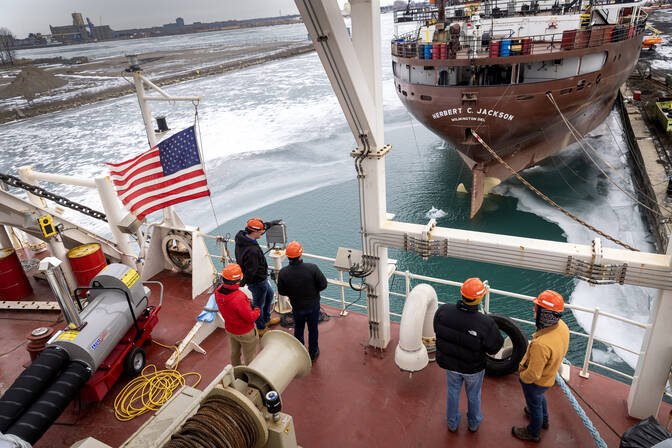
A Life Preserver for U.S. Shipbuilding
Michigan engineers help steer a national reinvestment in maritime power.
Our technical expertise
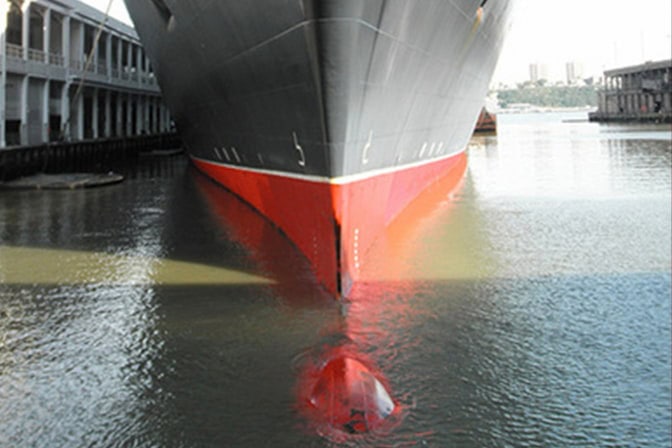
Maritime innovation & design
Advancing ship and shipyard capabilities

Resilient and efficient marine transport
Accelerating research into alternative fuels and propulsion, including nuclear reactors
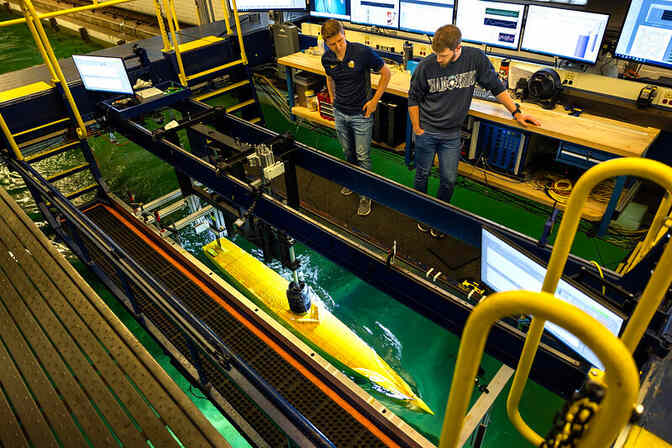
Autonomy & digitalization
Leveraging AI, sensors, and digital twins to modernize ship operations and performance
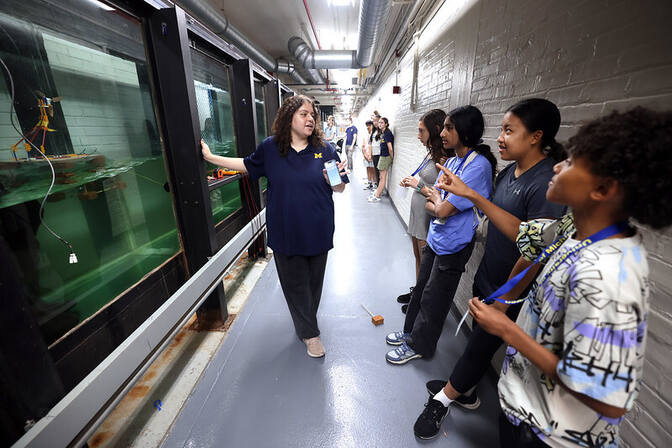
Workforce & strategy
Building the engineering pipeline and shaping policy
In the News
Marketplace
June 16, 2025
American shipbuilding foundered in the last century. Will a bipartisan push revive it?
American Homefront Project
June 2, 2025
To fulfill its growth plans, the Navy wants more young people to pursue careers in shipbuilding
Concentrate
May 20, 2025
U-M leads in national effort to revitalize U.S. shipbuilding
Detroit News
OCTOBER 6, 2024
UM team selected to lead maritime strategy development for Michigan

How to revive U.S. shipbuilding
Congress and the White House want it back. We asked Matthew Collette how they could do it effectively.
1,800+
NAME graduates over the past 34 years
4 of the last 5
U.S. Navy chief naval architects are alumni
140 Years at the Helm
The University of Michigan’s leadership in naval architecture began with an 1879 act of Congress and has endured across generations as other U.S. institutions removed or downsized their naval architecture programs. Our Naval Architecture and Marine Engineering department has played a role in nearly every U.S. Navy vessel class of the last two decades, and helped shape global commercial innovations like the cost-saving bulbous bow—still used to reduce drag and fuel use on modern cargo ships.
Our active and former faculty have advised decarbonization strategies with European companies and naval shipbuilding strategy for the U.S. and Australia. They have also brought the Japanese hull block construction method to U.S. shipyards in the ’90s to modernize their production processes. More recently, they have pioneered mechanics-based, modular construction methods that address some of the challenges for building today’s lightweight naval ships. They are working with industry to commercialize advanced nuclear reactor designs on land, and they hope to use their expertise for new reactors at sea.
In the 1980s, Michigan’s Marine Hydrodynamics Lab became one of the first to apply advanced modeling to ship design. The laboratory is home to one of the nation’s largest tow tanks, where experiments with real-world models have informed and advanced computer simulations of ships and their components long before “digital twin” became common vocabulary among engineers. U-M engineers helped launch the digital age of naval engineering, and the department has produced more PhDs in the field than any other academic program in the U.S.
Michigan alumni have risen to the top of the Navy’s architecture ranks, and the university has remained a national convener of marine research. Today, they continue to help shape Michigan and the nation’s maritime strategy, as well as refresh ship production courses with Industry 4.0 smart manufacturing methods for shipyards to avoid expensive repairs and delays. New collaborations with South Korean ship manufacturers will help train a workforce familiar with the latest shipbuilding technology and methods, and new partnerships with leading Canadian and Finnish research institutions will help improve the design and construction of ships that can navigate polar seas.
From WWII’s wartime shipbuilding boom to today’s calls for resilience, increased production, and autonomy, U-M has remained at the forefront of maritime innovation.
Only R1 university
with devoted naval architecture department
Facilities, institutes, and programs
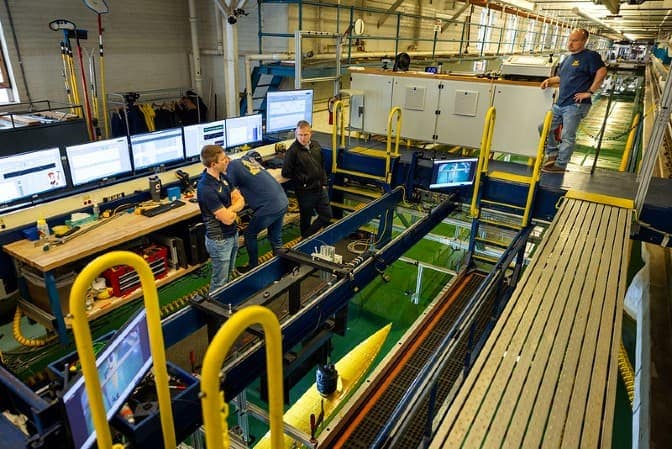
Aaron Friedman Marine Hydrodynamics Lab
A world-class facility supporting testing and design of ship hulls, propulsion systems and other aquatic devices.

Marine Autonomy Research Testbed
A 10,000 gallon tank supporting research on autonomous vessel design, marine sensing and perception, and multi-vehicle coordination.

South Korea Educational Partnership
U-M teams up with Seoul National University and Hyundai Heavy Industries to train leading shipbuilders with strong international ties.

Center for Naval Research and Education (CNRE)
The center will connect faculty, students, postdocs and US Navy engineers, building a community to find cutting-edge solutions to naval and marine engineering issues.
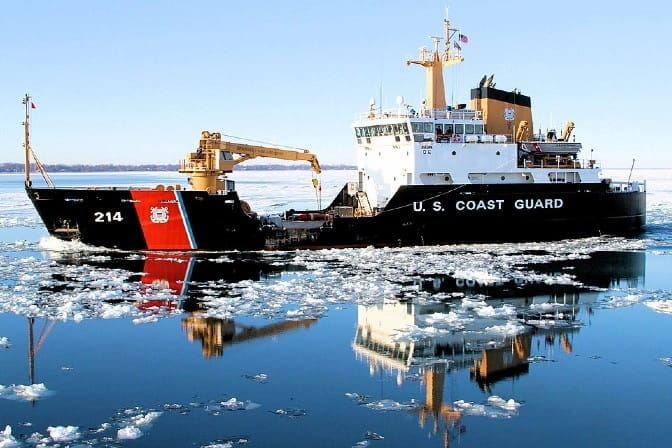
ICE-SHIELD
U-M is a member of an international research consortium supporting the Icebreaker Collaboration Effort (ICE) Pact between Canada, Finland and the U.S.
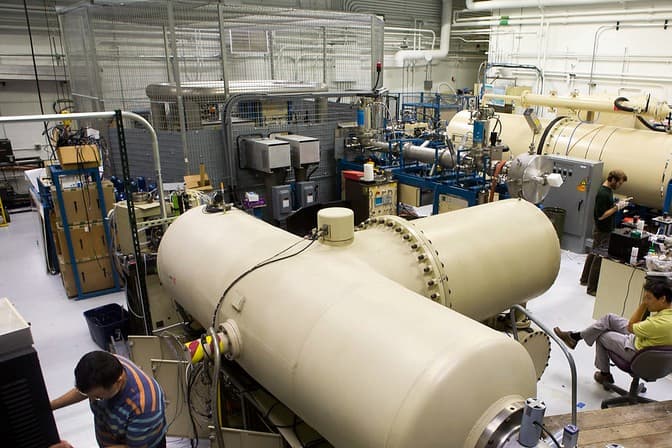
Michigan Ion Beam Laboratory
A unique facility that can fire multiple ions at reactor-level energies to study how radiation damages materials in real time.

Marine Engineering Laboratory
First lab in the nation to feature down-scaled replicas of shipboard electric power and propulsion systems, seawater cooling systems, and fuel systems to improve ship reliability.
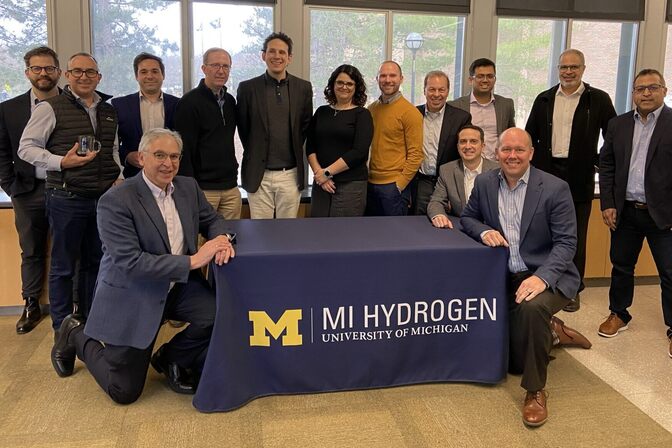
MI Hydrogen
Our naval architecture faculty participate in University-wide efforts to develop hydrogen fuel solutions.

U-M Autonomy
An award-winning student team provides hands-on experience with autonomous vessel design.
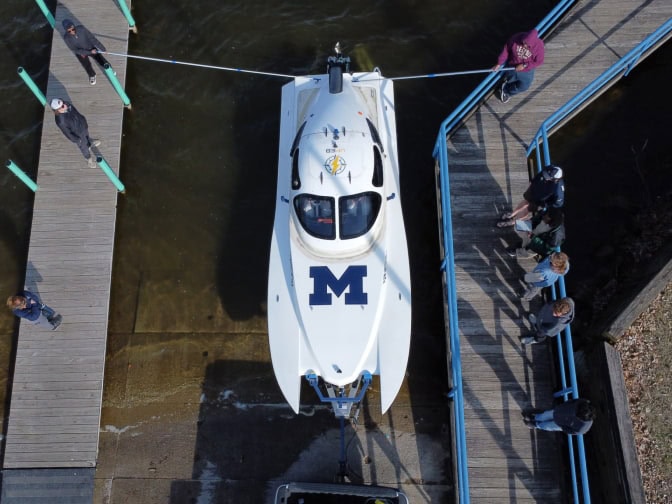
U-M Electric Boat
A student-team pushes all-electric boat speed and battery performance with funding from the Office of Naval Research.
All hands on deck
We work together with international leaders in shipbuilding and maritime research.









